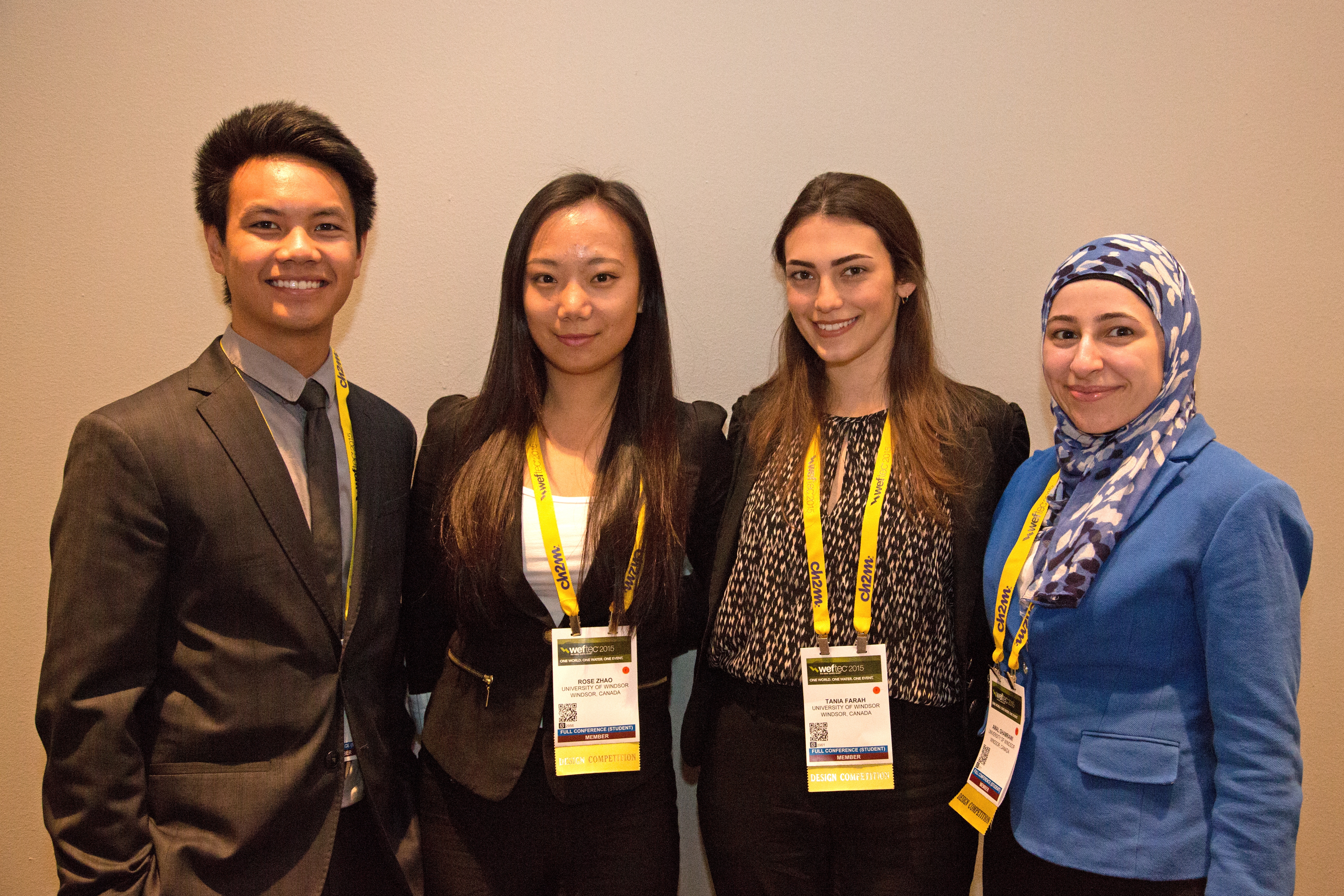
Most people don’t think twice about what happens to wastewater once it leaves their home.
“People tend to ignore the fact that the water we have on this planet is all that we have—we don’t get any new water,” said Rajesh Seth, a University of Windsor environmental engineering professor. “Every town or city—small or big—generates wastewater, so finding better ways of dealing with wastewater is very important.”
So important that a team of UWindsor environmental engineering students spent almost a year analyzing and developing a strategy to improve one of Canada’s largest wastewater treatment plants. The project produced by Amal Ghamrawi, David Tran, Ruoshi (Rose) Zhao and Tania Farah, led the team to a fourth-place finish in the Water Environment Federation’s Student Design Competition held September 27 at its Technical Exhibition and Conference in Chicago.
The team qualified for the North American competition after winning the provincial title at the Water Environment Association of Ontario’s technical symposium in Toronto earlier this year. It was the second straight appearance for Windsor Engineering.
Competing in the wastewater design category, the students were invited to develop processes that would help the Ashbridges Bay Wastewater Treatment Plant in Toronto minimize environmental impact, reduce costs or adopt a resource recovery approach while treating used water generated by residents and businesses. This includes water from sinks, showers, bathtubs, toilets, washing machines, dishwashers, etc.
The UWindsor team’s design not only would save the 105-year-old plant $8.4 million annually, it would remove and turn unwanted nutrients in the water into fertilizer, which can then be sold for use on land.
Ghamrawi said too many nitrogen and phosphorus nutrients in the water could cause algae to grow faster than the ecosystem can handle, harming water quality, food resources and habitat. Nitrogen released as ammonia can also be toxic to fish and other aquatic life.
“Resource recovery is beneficial to society because it uses nutrients found in wastewater to make a fertilizer that has less of an impact on the environment,” Ghamrawi said. “That fertilizer can then be sold to companies near the plant.”
The team worked under the supervision of Dr. Seth, civil and environmental engineering professor Edwin Tam, and industrial advisors from Golder Associates Ltd., Stantec, Ostara and Veolia.
“It was great to be one of two teams representing Canada,” said Ghamrawi, who graduated this year alongside her teammates. “We got to meet other teams that were passionate about water and wastewater, so it was really interesting to see that.”
